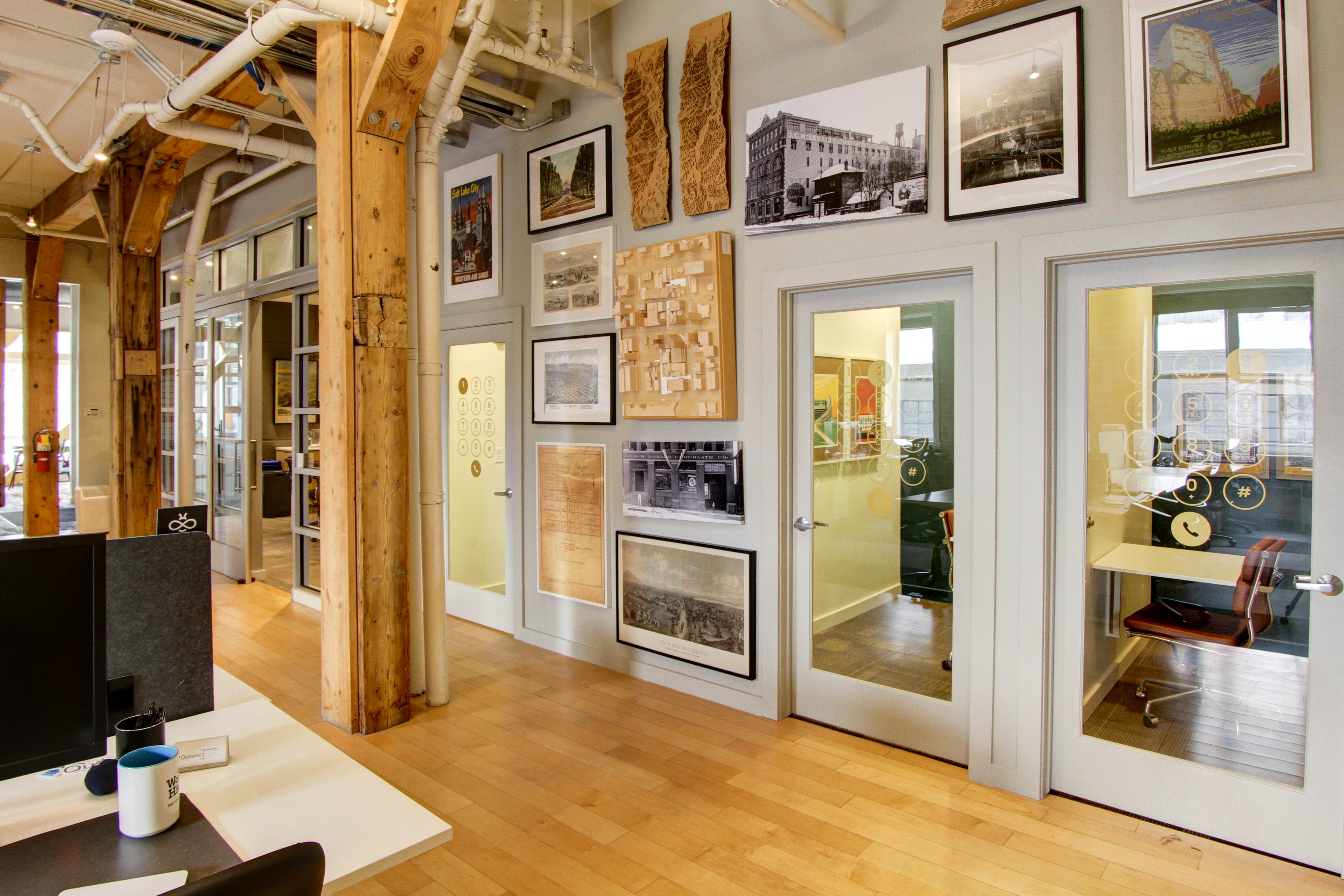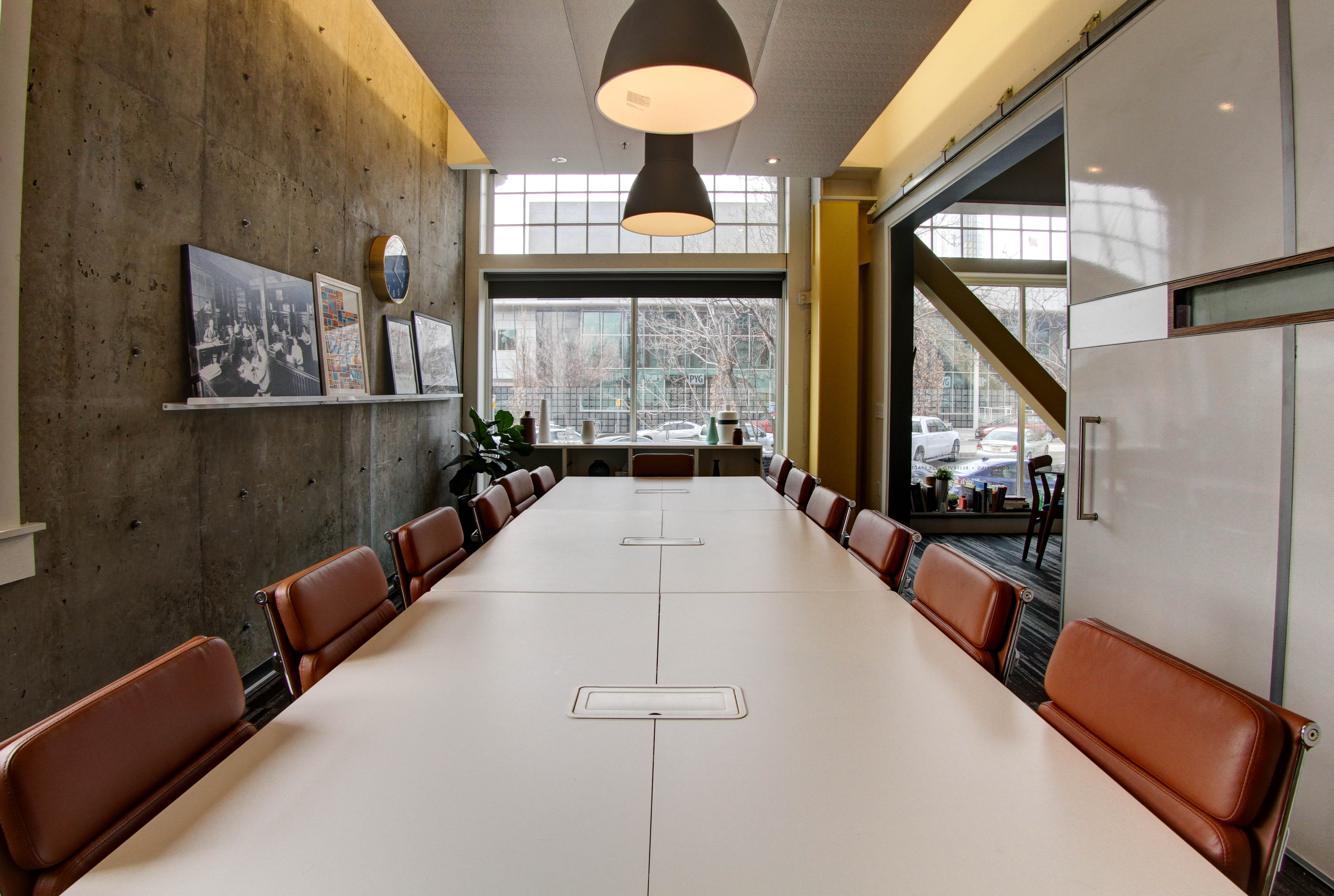Year-In-Review Meetings Are Crucial
As the year comes to a close, it’s a good time for businesses to reflect on the past year and plan for the year ahead. End-of-year strategy meetings are an important part of this process, providing a space for leaders and teams to come together and discuss the successes, challenges, and opportunities of the past year.
One of the key goals of end-of-year strategy meetings is to review the progress of the business over the past year. This can include looking at financial performance, analyzing key metrics and data, and identifying areas of success and areas for improvement. These discussions can help leaders and teams gain a better understanding of the current state of the business and how it has evolved over the past year.
 Another important aspect of end-of-year strategy meetings is to set goals and priorities for the year ahead. This can include identifying key initiatives and projects to focus on, setting targets and benchmarks to measure progress, and developing a plan to achieve these goals. By establishing a clear direction and plan for the year ahead, businesses can position themselves for success and growth.
Another important aspect of end-of-year strategy meetings is to set goals and priorities for the year ahead. This can include identifying key initiatives and projects to focus on, setting targets and benchmarks to measure progress, and developing a plan to achieve these goals. By establishing a clear direction and plan for the year ahead, businesses can position themselves for success and growth.
End-of-year strategy meetings can also provide an opportunity for team building and collaboration. By bringing together leaders and teams from different departments and levels of the organization, end-of-year strategy meetings can help foster communication and collaboration, which can be crucial for driving innovation and success.
By providing a space for leaders and teams to reflect on the past year and plan for the year ahead, end-of-year strategy meetings can help businesses position themselves for success and growth.
Work Hive in Sugar House and in Downtown Salt Lake City has conference rooms and all the other amenities you may need for a successful end-of year strategy meeting. Give us a call to check conference room availability!
Strategize for the New Year
As the new year approaches, it’s a good time for businesses to reflect on the past year and plan for the year ahead. Business strategy planning is an important part of this process, providing a framework for setting goals and priorities, and identifying the actions and resources needed to achieve them.
Here are some tips for business strategy planning for the new year:
- Start by reviewing the past year. Take a look at your business’s performance over the past year, analyzing key metrics and data to identify areas of success and areas for improvement. This can provide valuable insights and help inform your planning for the year ahead.
- Set clear goals and priorities. Identify the key initiatives and projects that you want to focus on in the new year, and set specific, measurable, achievable, relevant, and time-bound (SMART) goals to help guide your efforts. This can help ensure that your business is focused on the right priorities and moving in the right direction.
- Develop a plan of action. Once you’ve set your goals and priorities, it’s important to develop a plan of action to achieve them. This should include identifying the specific actions and resources needed, as well as a timeline for completing them. A well-defined plan can help ensure that your business stays on track and makes progress towards its goals.
- Get input from your team. Business strategy planning should be a collaborative process, involving input and ideas from leaders and teams across the organization. By engaging your team in the planning process, you can tap into their expertise and insights, and build buy-in and support for your plan.
- Monitor and adjust your plan. As the year progresses, it’s important to regularly monitor your progress and adjust your plan as needed. This can include revisiting your goals and priorities, and making changes to your plan to ensure that you’re on track to achieve them.
Set your business up for success in the new year. By following these tips, you can develop a clear and actionable plan to help guide your efforts and drive progress towards your goals.
If you need a space to collaborate with your team, or just a place to focus, consider spending a day at Work Hive, whether in Downtown Salt Lake City or Sugar House. We have the amenities you need -- from conference rooms to coffee to high speed internet. Give us a call or stop in!
Professional Development Tools: Where to Look
Professional development is an important aspect of career growth and success, and there are a number of tools available to help professionals enhance their skills and knowledge. Here are some examples of professional development tools that can be useful:
- Training and education programs: There are many organizations and institutions that offer training and education programs specifically designed to help professionals develop new skills and knowledge. These programs can be in-person or online, and can cover a wide range of topics, such as leadership, communication, problem-solving, and technical skills.
- Mentorship and coaching: Working with a mentor or coach can be a great way to learn from someone with more experience and receive personalized guidance and feedback. Mentorship and coaching programs can help professionals develop their skills and confidence, and can be especially valuable for those who are just starting out in their careers.
- Professional development workshops and conferences: Attending professional development workshops and conferences can be a great way to learn from experts, network with others in your field, and stay up-to-date on the latest trends and best practices. These events can be in-person or online, and can cover a wide range of topics.
- Online resources: There are many online resources available to help professionals develop their skills and knowledge. These can include online courses, webinars, podcasts, and articles. Many of these resources are free or low-cost, making them accessible to professionals at all levels.
- Self-study: Self-study can also be a useful tool for professional development. This might involve reading books or articles, watching videos, or taking online courses on topics that are relevant to your career.
Overall, there are many tools available to help professionals develop their skills and knowledge. By taking advantage of these resources and investing in your own professional development, you can enhance your career prospects and stay competitive in your field.
If you are looking for more ways to grow your own professional skills, start with a membership in a coworking space, like Work Hive. Coworking is a great way to network and learn from others. Or if you're looking to host your next team development workshop, consider one of our conference rooms!

Work Hive is located in Downtown Salt Lake City, Utah and across town in Sugar House.
Boost Participation in your End-of-year Team Meeting
Encouraging participation in team meetings is essential for fostering a collaborative and inclusive work environment. When everyone feels like they have a voice, they are more likely to be engaged and invested in the success of the team. Here are some tips for encouraging participation in team meetings:
- Start by setting the tone. As the leader of the meeting, it's important to create an open and welcoming environment where everyone feels comfortable sharing their thoughts and ideas. This could involve using inclusive language, actively listening to others, and being open to different viewpoints.
- Make it clear that everyone's input is valued. Even if someone doesn't have the answer to a problem, their perspective can still be valuable. Encourage people to speak up, and make it clear that their input is welcome and appreciated.
- Use inclusive decision-making techniques. Instead of making decisions unilaterally, consider using techniques like round robin, where everyone gets a chance to speak, or the "two feet" method, where people can stand or sit depending on whether they support a decision. These techniques help ensure that everyone has a say in the decision-making process.

- Encourage active listening. Encourage team members to listen actively to one another by making eye contact, nodding, and asking clarifying questions. This helps create a more collaborative environment and ensures that everyone's input is heard.
- Use icebreakers. If you're working with a new team or if there are shy individuals in the group, consider using icebreakers to encourage participation. Icebreakers can be as simple as asking people to introduce themselves or share something about themselves, or as structured as a team-building activity.
- Follow up on action items. After the meeting, make sure to assign tasks and follow up on progress. This helps ensure that everyone's contributions are recognized and that their input is being taken into account.
By following these tips, you can create a more inclusive and collaborative team meeting environment where everyone feels comfortable participating and sharing their ideas.
If you need a space to collaborate with your team, or just a place to focus, consider spending a day at Work Hive, whether in Downtown Salt Lake City or Sugar House. We have the amenities you need -- from conference rooms to coffee to high speed internet. Give us a call or stop in!
Encouraging Participation in Team Meetings
Encouraging participation in team meetings is essential for fostering a collaborative and inclusive work environment. When everyone feels like they have a voice, they are more likely to be engaged and invested in the success of the team. Here are some tips for encouraging participation in team meetings:
- Start by setting the tone. As the leader of the meeting, it's important to create an open and welcoming environment where everyone feels comfortable sharing their thoughts and ideas. This could involve using inclusive language, actively listening to others, and being open to different viewpoints.
- Make it clear that everyone's input is valued. Even if someone doesn't have the answer to a problem, their perspective can still be valuable. Encourage people to speak up, and make it clear that their input is welcome and appreciated.

- Use inclusive decision-making techniques. Instead of making decisions unilaterally, consider using techniques like round robin, where everyone gets a chance to speak, or the "two feet" method, where people can stand or sit depending on whether they support a decision. These techniques help ensure that everyone has a say in the decision-making process.
- Encourage active listening. Encourage team members to listen actively to one another by making eye contact, nodding, and asking clarifying questions. This helps create a more collaborative environment and ensures that everyone's input is heard.
- Use icebreakers. If you're working with a new team or if there are shy individuals in the group, consider using icebreakers to encourage participation. Icebreakers can be as simple as asking people to introduce themselves or share something about themselves, or as structured as a team-building activity.
- Follow up on action items. After the meeting, make sure to assign tasks and follow up on progress. This helps ensure that everyone's contributions are recognized and that their input is being taken into account.
By following these tips, you can create a more inclusive and collaborative team meeting environment where everyone feels comfortable participating and sharing their ideas.
If you need a space to collaborate with your team, or just a place to focus, consider spending a day at Work Hive, whether in Downtown Salt Lake City or Sugar House. We have the amenities you need -- from conference rooms to coffee to high speed internet. Give us a call or stop in!
Get Prepared for Better Team Meetings
Effective team meetings are crucial for the success of any project or organization, and having the right tools and space can make a big difference. Conference rooms with good wifi, whiteboards, and sticky notes can all be useful for brainstorming and visualizing ideas. Here are some tips for leading effective team meetings in a conference room setting:
- Define the purpose of the meeting. Before you even schedule the conference room, take a moment to consider what you want to achieve. Who needs to be involved in the discussion? What decisions need to be made? By having a clear purpose in mind, you can ensure that the meeting stays focused and on track.
- Create an agenda. An agenda helps attendees come prepared and stay focused during the meeting. It should include a list of topics that will be discussed, as well as the time allotted for each topic. Distribute the agenda to attendees beforehand so that they can review it and come prepared.

- Start and end on time. Respect people's time by starting and ending the meeting at the scheduled time. This helps keep the meeting productive and ensures that everyone has the opportunity to contribute.
- Encourage participation. A team meeting is not a lecture; it's an opportunity for everyone to share their thoughts and ideas. As the leader of the meeting, it's your job to facilitate discussion and encourage input from all team members. Utilize the whiteboards and sticky notes to visually brainstorm and organize ideas.
- Stay focused. It's easy for team meetings to go off on tangents, but it's important to stay on topic in order to make progress. If the conversation strays from the main topic, gently steer it back to the agenda.
- Foster open communication. Create a safe and inclusive environment where team members feel comfortable sharing their thoughts and ideas. Encourage open and honest dialogue, and be willing to listen to different viewpoints.
- Follow up on action items. After the meeting, make sure to assign tasks and follow up on progress. This will help ensure that the work gets done and that the meeting was productive.
By following these tips and utilizing the resources available in the conference room, you can lead effective team meetings that help your team make progress and achieve its goals.
If you need a space to collaborate with your team, or just a place to focus, consider spending a day at Work Hive, whether in Downtown Salt Lake City or Sugar House. We have the amenities you need -- from conference rooms to coffee to high speed internet. Give us a call or stop in!
Make More Happen in your Team Meetings
Team meetings are an essential aspect of any successful organization. They provide an opportunity for team members to come together, discuss important issues, share updates, and collaborate on projects. By holding regular meetings, teams can stay aligned, informed, and motivated, ultimately leading to increased productivity and achievement of goals.
However, not all team meetings are created equal. Ineffective meetings can be a waste of time and can even hinder progress. To ensure that your team meetings are productive, there are several key factors to consider.
First and foremost, it's important to have a clear agenda for each meeting. This will help ensure that the meeting stays on track and that all relevant topics are covered. It's also a good idea to distribute the agenda ahead of time, so that team members can come prepared with any updates or questions.
 Another key factor is to limit the length of meetings. Research has shown that the human brain has a limited capacity for concentration, so long meetings can actually decrease productivity. Instead, aim for meetings that are no longer than an hour, with shorter meetings being even more effective.
Another key factor is to limit the length of meetings. Research has shown that the human brain has a limited capacity for concentration, so long meetings can actually decrease productivity. Instead, aim for meetings that are no longer than an hour, with shorter meetings being even more effective.
It's also essential to have a designated facilitator for each meeting. This person can help keep the meeting focused and on track, facilitate discussions, and ensure that everyone has a chance to contribute.
Additionally, it's important to create an inclusive and collaborative environment in meetings. Encourage team members to share their ideas and listen to each other with respect and open-mindedness. This will foster a sense of teamwork and help everyone feel invested in the success of the group.
Finally, follow up on any action items or decisions made in the meeting. This will ensure that progress is made and will keep the team accountable.
If you need a space to collaborate with your team, or just a place to focus, consider spending a day at Work Hive, whether in Downtown Salt Lake City or Sugar House. We have the amenities you need -- from conference rooms to coffee to high speed internet. Give us a call or stop in!
The Right Tools for a Great Team Meeting

Effective team meetings are crucial for the success of any project or organization, and having the right tools and space can make a big difference. Conference rooms with good wifi, whiteboards, and sticky notes can all be useful for brainstorming and visualizing ideas. Here are some tips for leading effective team meetings in a conference room setting:
- Define the purpose of the meeting. Before you even schedule the conference room, take a moment to consider what you want to achieve. Who needs to be involved in the discussion? What decisions need to be made? By having a clear purpose in mind, you can ensure that the meeting stays focused and on track.
- Create an agenda. An agenda helps attendees come prepared and stay focused during the meeting. It should include a list of topics that will be discussed, as well as the time allotted for each topic. Distribute the agenda to attendees beforehand so that they can review it and come prepared.
- Start and end on time. Respect people's time by starting and ending the meeting at the scheduled time. This helps keep the meeting productive and ensures that everyone has the opportunity to contribute.
- Encourage participation. A team meeting is not a lecture; it's an opportunity for everyone to share their thoughts and ideas. As the leader of the meeting, it's your job to facilitate discussion and encourage input from all team members. Utilize the whiteboards and sticky notes to visually brainstorm and organize ideas.
- Stay focused. It's easy for team meetings to go off on tangents, but it's important to stay on topic in order to make progress. If the conversation strays from the main topic, gently steer it back to the agenda.
- Foster open communication. Create a safe and inclusive environment where team members feel comfortable sharing their thoughts and ideas. Encourage open and honest dialogue, and be willing to listen to different viewpoints.
- Follow up on action items. After the meeting, make sure to assign tasks and follow up on progress. This will help ensure that the work gets done and that the meeting was productive.
By following these tips and utilizing the resources available in the conference room, you can lead effective team meetings that help your team make progress and achieve its goals.
If you need a space to collaborate with your team, or just a place to focus, consider spending a day at Work Hive, whether in Downtown Salt Lake City or Sugar House. We have the amenities you need -- from conference rooms to coffee to high speed internet. Give us a call or stop in!
A Leader's Strategies for Team Meetings
Effective team meetings are crucial for the success of any project or organization. They provide an opportunity for team members to come together, discuss progress, and make decisions. However, not all team meetings are created equal. To ensure that your team meetings are productive and effective, follow these tips:
- Define the purpose of the meeting. Before you even schedule the meeting, take a moment to consider what you want to achieve. Who needs to be involved in the discussion? What decisions need to be made? By having a clear purpose in mind, you can ensure that the meeting stays focused and on track.
- Create an agenda. An agenda helps attendees come prepared and stay focused during the meeting. It should include a list of topics that will be discussed, as well as the time allotted for each topic. Distribute the agenda to attendees beforehand so that they can review it and come prepared.
- Start and end on time. Respect people's time by starting and ending the meeting at the scheduled time. This helps keep the meeting productive and ensures that everyone has the opportunity to contribute.
- Encourage participation. A team meeting is not a lecture; it's an opportunity for everyone to share their thoughts and ideas. As the leader of the meeting, it's your job to facilitate discussion and encourage input from all team members.
- Stay focused. It's easy for team meetings to go off on tangents, but it's important to stay on topic in order to make progress. If the conversation strays from the main topic, gently steer it back to the agenda.
- Foster open communication. Create a safe and inclusive environment where team members feel comfortable sharing their thoughts and ideas. Encourage open and honest dialogue, and be willing to listen to different viewpoints.
- Follow up on action items. After the meeting, make sure to assign tasks and follow up on progress. This will help ensure that the work gets done and that the meeting was productive.
By following these tips, you can lead effective team meetings that help your team make progress and achieve its goals.
If you need a space to collaborate with your team, or just a place to focus, consider spending a day at Work Hive, whether in Downtown Salt Lake City or Sugar House. We have the amenities you need -- from conference rooms to coffee to high speed internet. Give us a call or stop in!
6 Tips for Team Meetings
Effective team meetings are a crucial part of any successful organization. They provide an opportunity for team members to collaborate, share ideas, and make important decisions. As a leader, it is important to ensure that your team meetings are productive and effective. Here are some tips to help you do just that:
- Clearly define the purpose of the meeting. Before you even schedule the meeting, make sure you know what you want to achieve. Who needs to be involved in the discussion? What decisions need to be made? By defining the purpose of the meeting, you can ensure that you are bringing together the right people and focusing on the most important topics.
- Create an agenda and distribute it to attendees beforehand. An agenda will help keep the meeting on track and ensure that everyone is prepared. It also helps to set expectations for what will be covered and how much time will be devoted to each topic.
- Start and end the meeting on time. Respect for people's time is key to maintaining morale and keeping the team focused. By starting and ending the meeting on time, you show that you value your team's time and are committed to keeping the meeting productive.
- Encourage participation. Team meetings are an opportunity for everyone to contribute their thoughts and ideas. Make sure to ask for input from all team members and encourage open communication. This will help create a more inclusive environment where everyone feels heard and valued.
- Keep the meeting focused. It can be easy for meetings to get sidetracked or go off on tangents. As the leader, it is your job to keep the meeting on track and ensure that all of the important topics are addressed.
- Follow up on action items. After the meeting, make sure to assign tasks and follow up on progress. This will help ensure that the team stays on track and stays accountable for meeting its goals.
By following these tips, you can help ensure that your team meetings are productive and effective. By creating a clear purpose, distributing an agenda beforehand, starting and ending on time, encouraging participation, keeping the meeting focused, and following up on action items, you can create a positive and productive environment that supports your team's success.

If you need a space to collaborate with your team, our conference rooms are the perfect place. We have white boards, screens you can easily connect to, comfortable chairs, and fast wifi. Consider spending a day at Work Hive, whether in Downtown Salt Lake City or Sugar House. Give us a call to check availability!










